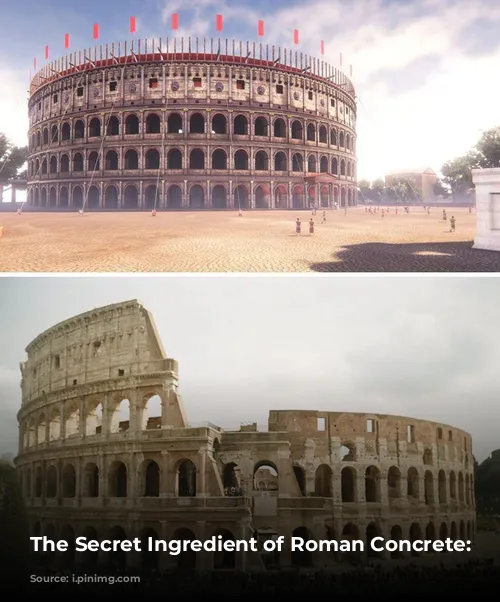Have you ever wondered why the Roman Colosseum, built over 2,000 years ago, still stands strong today? You might think it’s because of the Romans’ advanced technology, but the truth is much simpler. The key lies in their concrete, a material that defied the ravages of time with an almost magical self-healing ability.
Unraveling the Mystery of Roman Concrete
For decades, scientists have been fascinated by the longevity of Roman concrete. It’s a testament to the Romans’ mastery of materials and construction techniques. Early theories attributed this remarkable durability to the use of pozzolan, a volcanic rock found near Mount Vesuvius. However, recent research has uncovered a deeper secret.
The true key to Roman concrete’s longevity is the presence of quicklime, a substance known for its corrosive nature, but surprisingly crucial for the material’s strength and self-healing properties. It was discovered that the Romans added quicklime, fresh from the oven and still burning, to their traditional mixture of gravel and slaked lime. This unique addition played a pivotal role in the concrete’s exceptional durability and the speed of construction.
Quicklime: The Game Changer
The addition of quicklime accelerated the hardening process and significantly strengthened the concrete. But the real magic happened when the concrete was exposed to air. The quicklime reacted with the carbon in the environment, effectively sealing the pores of the material and preventing further deterioration. This is why cracks in Roman structures often self-heal within a few days, making them remarkably resistant to the elements.
A Legacy of Durability
This discovery sheds light on the durability of iconic Roman structures like the Colosseum and the Pantheon. These buildings didn’t need reinforcement with steel or other materials because their concrete was inherently strong and capable of withstanding the test of time. This same cement mix was used in both grand structures and intricate mosaics, demonstrating its versatility.
Roman Concrete: A Masterpiece of Trial and Error
It’s fascinating to realize that the Romans, despite lacking a deep understanding of chemistry, achieved remarkable results through observation and experimentation. They were masters at selecting and using high-quality materials, paving the way for the construction of some of the most enduring structures in history. Their ability to create concrete that could withstand centuries of wear and tear is a testament to their ingenuity.
A Lesson in Sustainability
Roman concrete wasn’t just durable; it was also environmentally friendly. The Romans used materials sourced locally and followed a sustainable approach to construction. Their techniques, like soaking lime for six months and carefully sifting gravel, resulted in high-quality concrete that was both durable and ecologically responsible.
The Timeless Appeal of Roman Concrete
Modern construction materials, while advanced, often lack the longevity of Roman concrete. The addition of quicklime to their cement mix not only made it stronger but also endowed it with a self-healing property that modern concrete simply doesn’t have. This discovery has the potential to revolutionize the way we build, offering a path towards more durable and sustainable structures.
By understanding the secrets of Roman concrete, we can learn valuable lessons about construction and sustainability, building for the future while respecting the ingenuity of the past.
